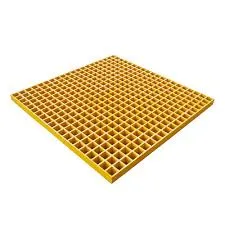
-
 Afrikaans
Afrikaans -
 Albanian
Albanian -
 Amharic
Amharic -
 Arabic
Arabic -
 Armenian
Armenian -
 Azerbaijani
Azerbaijani -
 Basque
Basque -
 Belarusian
Belarusian -
 Bengali
Bengali -
 Bosnian
Bosnian -
 Bulgarian
Bulgarian -
 Catalan
Catalan -
 Cebuano
Cebuano -
 China
China -
 China (Taiwan)
China (Taiwan) -
 Corsican
Corsican -
 Croatian
Croatian -
 Czech
Czech -
 Danish
Danish -
 Dutch
Dutch -
 English
English -
 Esperanto
Esperanto -
 Estonian
Estonian -
 Finnish
Finnish -
 French
French -
 Frisian
Frisian -
 Galician
Galician -
 Georgian
Georgian -
 German
German -
 Greek
Greek -
 Gujarati
Gujarati -
 Haitian Creole
Haitian Creole -
 hausa
hausa -
 hawaiian
hawaiian -
 Hebrew
Hebrew -
 Hindi
Hindi -
 Miao
Miao -
 Hungarian
Hungarian -
 Icelandic
Icelandic -
 igbo
igbo -
 Indonesian
Indonesian -
 irish
irish -
 Italian
Italian -
 Japanese
Japanese -
 Javanese
Javanese -
 Kannada
Kannada -
 kazakh
kazakh -
 Khmer
Khmer -
 Rwandese
Rwandese -
 Korean
Korean -
 Kurdish
Kurdish -
 Kyrgyz
Kyrgyz -
 Lao
Lao -
 Latin
Latin -
 Latvian
Latvian -
 Lithuanian
Lithuanian -
 Luxembourgish
Luxembourgish -
 Macedonian
Macedonian -
 Malgashi
Malgashi -
 Malay
Malay -
 Malayalam
Malayalam -
 Maltese
Maltese -
 Maori
Maori -
 Marathi
Marathi -
 Mongolian
Mongolian -
 Myanmar
Myanmar -
 Nepali
Nepali -
 Norwegian
Norwegian -
 Norwegian
Norwegian -
 Occitan
Occitan -
 Pashto
Pashto -
 Persian
Persian -
 Polish
Polish -
 Portuguese
Portuguese -
 Punjabi
Punjabi -
 Romanian
Romanian -
 Russian
Russian -
 Samoan
Samoan -
 Scottish Gaelic
Scottish Gaelic -
 Serbian
Serbian -
 Sesotho
Sesotho -
 Shona
Shona -
 Sindhi
Sindhi -
 Sinhala
Sinhala -
 Slovak
Slovak -
 Slovenian
Slovenian -
 Somali
Somali -
 Spanish
Spanish -
 Sundanese
Sundanese -
 Swahili
Swahili -
 Swedish
Swedish -
 Tagalog
Tagalog -
 Tajik
Tajik -
 Tamil
Tamil -
 Tatar
Tatar -
 Telugu
Telugu -
 Thai
Thai -
 Turkish
Turkish -
 Turkmen
Turkmen -
 Ukrainian
Ukrainian -
 Urdu
Urdu -
 Uighur
Uighur -
 Uzbek
Uzbek -
 Vietnamese
Vietnamese -
 Welsh
Welsh -
 Bantu
Bantu -
 Yiddish
Yiddish -
 Yoruba
Yoruba -
 Zulu
Zulu
Advanced FRP Materials for Thermal and Nuclear Energy Applications in Modern Engineering
FRP Materials for Heat and Nuclear Power Applications
Fiber-Reinforced Polymers (FRPs) have emerged as vital materials in various industrial sectors, particularly in heat and nuclear power applications. Their unique combination of strength, lightweight properties, corrosion resistance, and thermal stability makes them well-suited for environments where traditional materials may fail. As the demand for cleaner energy sources grows, the use of advanced materials like FRPs becomes increasingly important in enhancing the efficiency and safety of power generation systems.
In the realm of nuclear power, where materials must withstand extreme conditions including high radiation, temperature fluctuations, and corrosive environments, FRPs offer significant advantages. One key feature of FRPs is their exceptional strength-to-weight ratio. This property allows for the design of lighter structural components, which can reduce the overall weight of the reactor and associated systems. This reduction can lead to lower costs and improved efficiency in both construction and operation.
Furthermore, FRPs exhibit excellent corrosion resistance. Traditional metals like steel are prone to rust and degradation over time, particularly in harsh chemical environments such as those found in nuclear reactors. The use of FRP composites minimizes this risk by preventing corrosion and extending the lifespan of components, thus enhancing safety and reducing maintenance costs. This aspect is especially crucial in the context of accidental chemical leaks and environmental hazards where nuclear safety is paramount.
The thermal properties of FRPs also deserve consideration. These materials can be engineered for specific thermal conductivity requirements, making them ideal for insulating components in nuclear reactors. Insulation plays a critical role in maintaining optimal operating temperatures, thereby improving overall system efficiency. Moreover, the use of FRP materials can aid in thermal management systems designed to dissipate heat effectively, ensuring smooth operations and reducing the risks of overheating.
frp materials for heat and nuclear power applications

The versatility of FRPs is another reason for their growing prevalence in heat and nuclear power applications. Various types of fibers (such as aramid, carbon, and glass) and resins (including epoxy, vinyl ester, and thermoplastics) can be combined to create composite materials tailored for specific applications. For instance, carbon-fiber-reinforced polymers (CFRPs) have been extensively studied for their mechanical properties and thermal stability, making them suitable for critical structural components in reactors.
Moreover, the integration of FRPs into nuclear power plants aligns with environmental goals. As the industry moves towards more sustainable practices, the lifecycle impact of materials is taken into account. The lightweight nature of FRPs reduces the energy required for transportation and installation compared to traditional materials. Additionally, advancements in recycling technologies for FRPs are improving their sustainability profile, making them an attractive option for future energy projects.
Despite these advantages, the adoption of FRPs in the nuclear sector also poses challenges. The initial cost of FRP materials can be higher than that of traditional materials, which may deter some engineering applications. Moreover, the long-term performance of FRPs under radiation exposure needs further investigation, requiring collaboration between materials scientists and nuclear engineers to assess durability and safety.
In conclusion, Fiber-Reinforced Polymers present significant opportunities for enhancing efficiency, safety, and sustainability in heat and nuclear power applications. By leveraging their unique properties, the energy sector can improve infrastructure and reduce the environmental impact associated with power generation. Continued research and development in this field will be essential to overcome existing challenges and fully harness the potential of FRPs. As global energy demands evolve towards cleaner, more efficient solutions, FRPs are poised to play an increasingly vital role in shaping the future of energy production.









